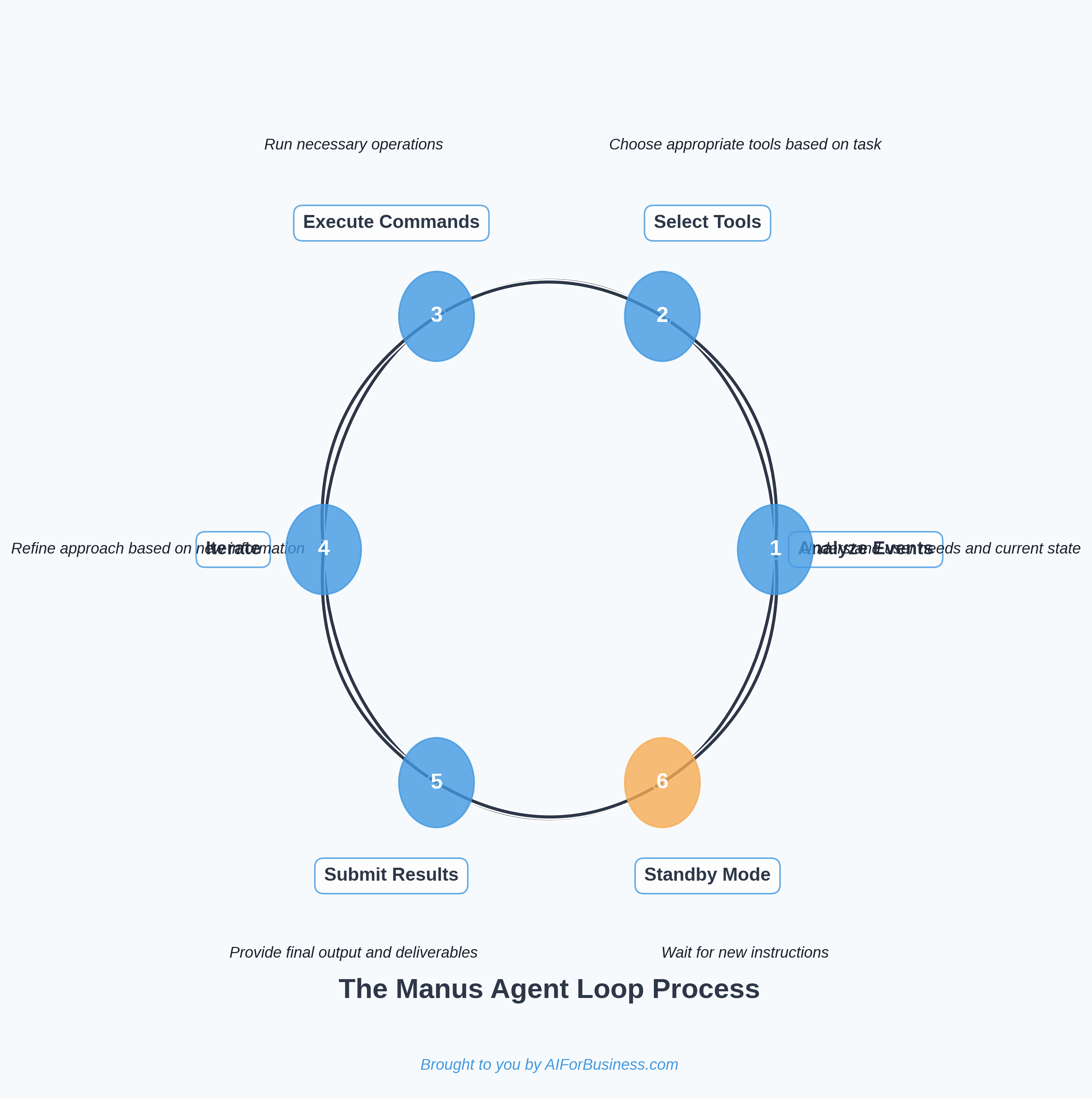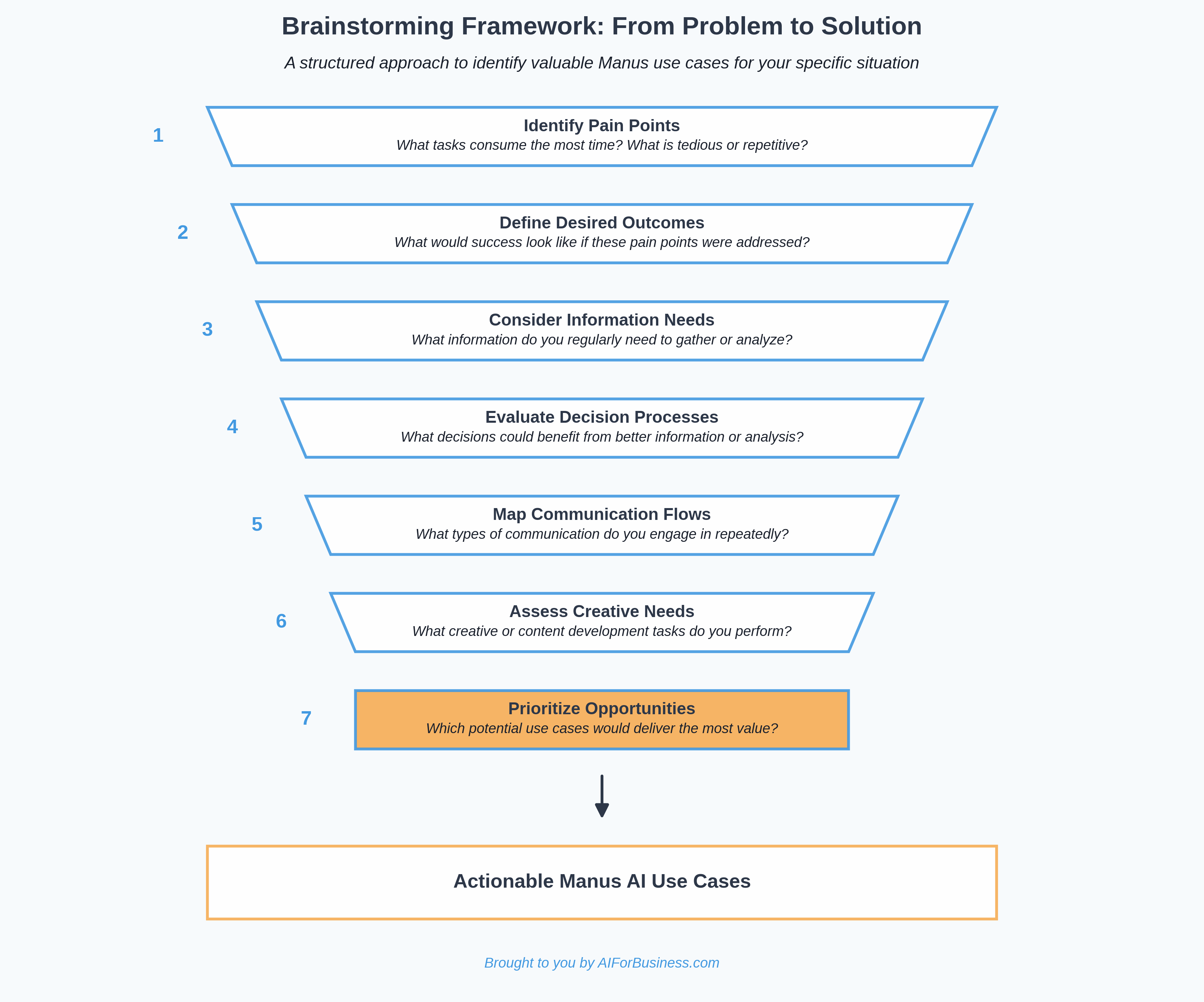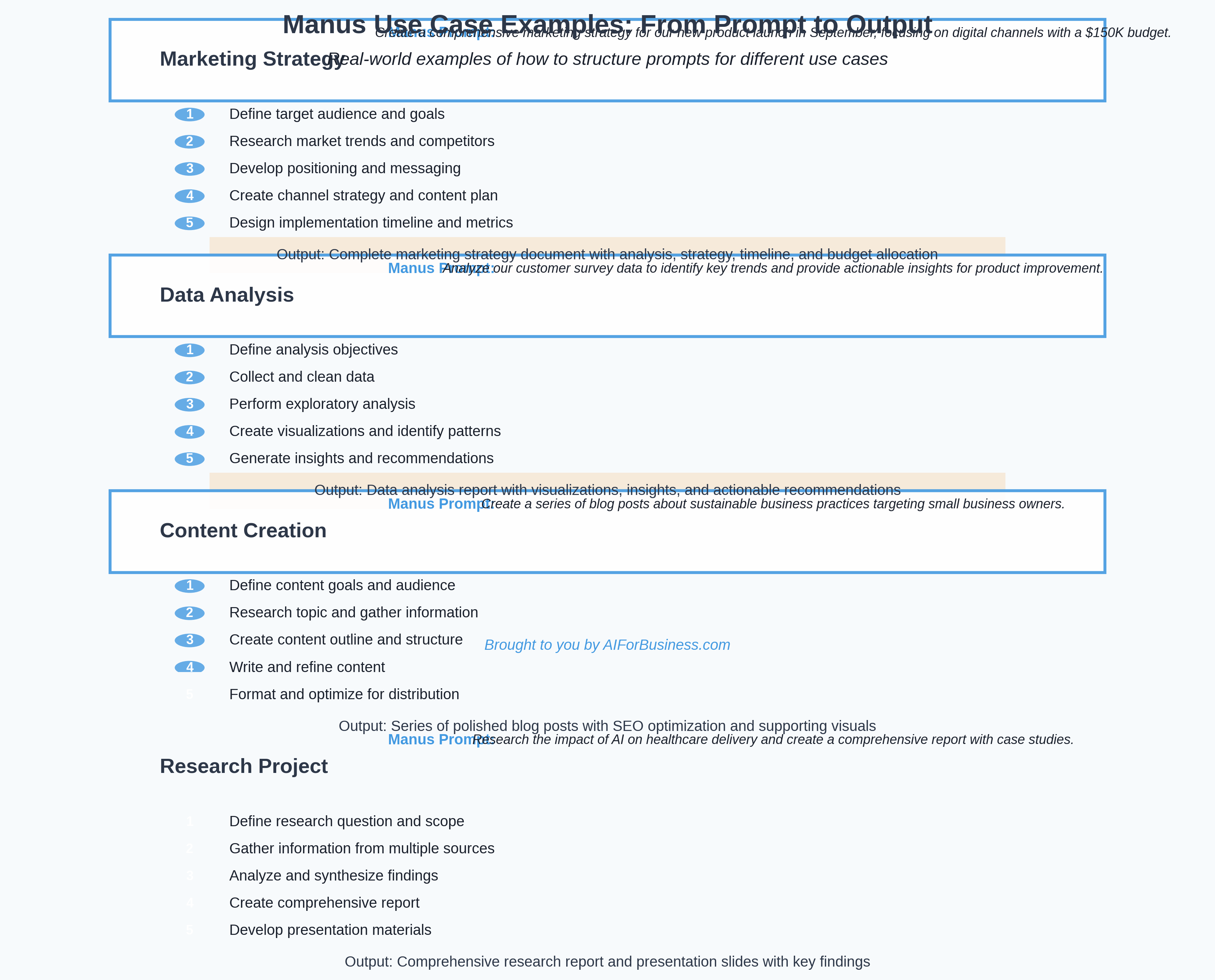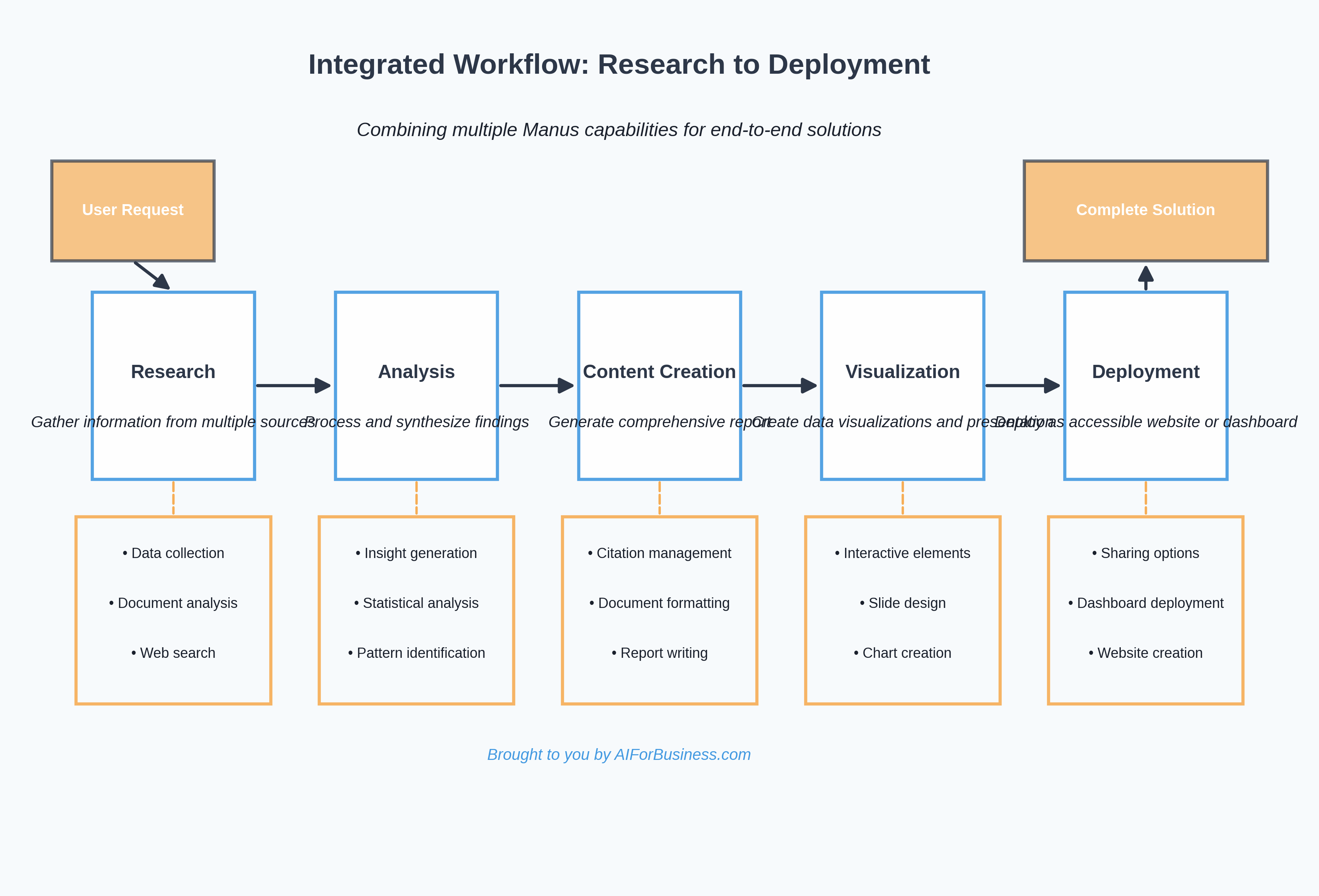Example: Marketing Content Series
Initial Prompt:
"Create a series of blog posts about sustainable business practices for our company website. We're a mid-sized retail business committed to reducing our environmental impact."
Manus Process:
- Researches current sustainable business practices relevant to retail
- Identifies key topics that would resonate with the target audience
- Creates an editorial calendar with proposed topics and publication schedule
- Drafts comprehensive blog posts with engaging headlines
Value Added:
Manus maintains consistency across multiple pieces of content, incorporates current best practices, and creates an integrated content strategy rather than just isolated articles.





